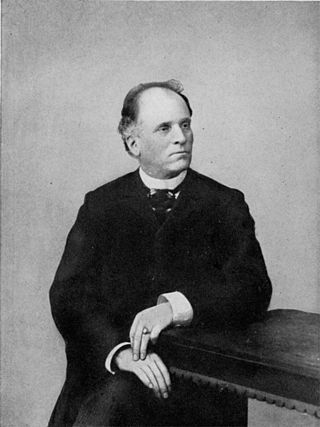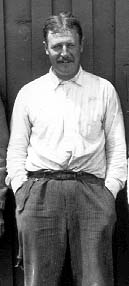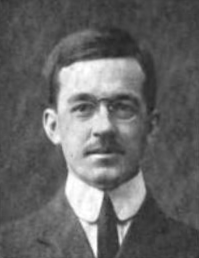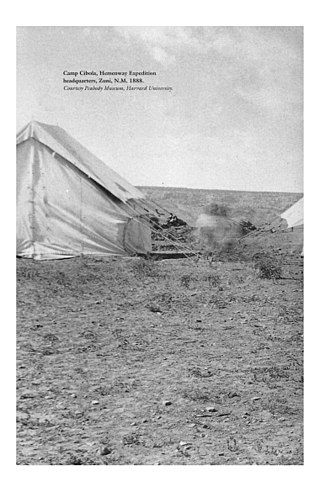
Adolph Francis Alphonse Bandelier was a Swiss and American archaeologist who particularly explored the indigenous cultures of the American Southwest, Mexico, and South America. He immigrated to the United States with his family as a youth and made his life there, abandoning the family business to study in the new fields of archeology and ethnology.

Mogollon culture is an archaeological culture of Native American peoples from Southern New Mexico and Arizona, Northern Sonora and Chihuahua, and Western Texas. The northern part of this region is Oasisamerica, while the southern span of the Mogollon culture is known as Aridoamerica.

Jesse Walter Fewkes was an American anthropologist, archaeologist, writer, and naturalist.

Alfred Vincent Kidder was an American archaeologist considered the foremost of the southwestern United States and Mesoamerica during the first half of the 20th century. He saw a disciplined system of archaeological techniques as a means to extend the principles of anthropology into the prehistoric past and so was the originator of the first comprehensive, systematic approach to North American archaeology.
The Cochise tradition is the southern archeological tradition of the four Southwestern Archaic traditions, in the present-day Southwestern United States.

Alfred Marston Tozzer was an American anthropologist, archaeologist, linguist, and educator. His principal area of interest was Mesoamerican, especially Maya, studies. He was the husband of Margaret Castle Tozzer and father of figure skating champion Joan Tozzer.

The Peabody Museum of Archaeology and Ethnology is a museum affiliated with Harvard University in Cambridge, Massachusetts, United States. Founded in 1866, the Peabody Museum is one of the oldest and largest museums focusing on anthropological material, with particular focus on the ethnography and archaeology of the Americas. The museum is caretaker to over 1.2 million objects, some 900 feet (270 m) of documents, 2,000 maps and site plans, and about 500,000 photographs. The museum is located at Divinity Avenue on the Harvard University campus. The museum is one of the four Harvard Museums of Science and Culture open to the public.
Harriet Siliman Cosgrove (1887–1970) was an archaeologist trained in the Southwestern United States. Her fascination for archeology first started when she moved to Silver City, New Mexico, in 1906 with her husband Cornelius.
Cornelius Burton ("Burt") Cosgrove (1875–1936) was a self-trained archaeologist in the Southwestern United States. He was married to Harriet, the other half of the dynamic non-professional Cosgrove archeology unit.
Denver Fred Wendorf was an American archaeologist known primarily for his groundbreaking research in northeast Africa. He also founded the Fort Burgwin Research Center and Department of Anthropology at Southern Methodist University, where he was Henderson-Morrison Professor of Prehistory. He won numerous awards throughout his career and was a member of the United States National Academy of Sciences.

John Otis Brew, was an American archaeologist of the American Southwest and director at the Peabody Museum at Harvard University. Many of his publications are still used today by archaeologists that conduct their work in the American Southwest. J.O. Brew was a titan in the world of archaeology for his attempts to "preserve our archaeological heritage".
Wirt Henry Wills is an American Southwest archaeologist and a Professor of anthropology at the University of New Mexico. He has written numerous papers and books on the archaeology of the prehistoric southwest. He is most notable for investigations and excavations in or near New Mexico, including: the prehistoric site at Bat Cave in Catron County, New Mexico, the Mogollon Su site in western New Mexico and Pueblo Bonito located in Chaco Culture National Historical Park.

War Before Civilization: the Myth of the Peaceful Savage is a book by Lawrence H. Keeley, a professor of archaeology at the University of Illinois at Chicago who specialized in prehistoric Europe. The book deals with warfare conducted throughout human history by societies with little technology. In the book, Keeley aims to stop the apparent trend in seeing modern civilization as bad, by setting out to prove that prehistoric societies were often violent and engaged in frequent warfare that was highly destructive to the cultures involved.
The NAN Ranch Ruin site is a Late Pit-house and Classic Mimbres village located along the Mimbres River, at Dwyer, New Mexico and the NAN Ranch was listed on the National Register of Historic Places in 1988. It was occupied by Mimbreños from about 600 to 1140 and is considered an early Mogollon culture site.

The Hemenway Southwestern Archaeological Expedition occurred between 1886 and 1894 in the American Southwest. Sponsored by Mary Tileston Hemenway, a wealthy widow and philanthropist, the expedition was initially led by Frank Hamilton Cushing, who was replaced in 1889 by Jesse Walter Fewkes. It was considered to be a major scientific archaeological expedition, notable for the discovery of the prehistoric Hohokam culture.

Swarts Ruin, also known as the Swarts Ranch Ruin, is an archaeological site in New Mexico's Mimbres Valley excavated from 1924 to 1927 by Harriet S. ("Hattie") Cosgrove and Cornelius B. ("Burt") Cosgrove.

Anthony Hanna Berlant is an American artist who was born in New York City. He attended the University of California, Los Angeles, where he received a BA (1961) and MA (1962) in painting and an MFA (1963) in sculpture. He has a large collection of Southwestern Native American art, especially Mimbres pottery and Navajo rugs. He lives and works in Santa Monica, California.

Astialakwa was a prehistoric and historic village built by the ancestral Puebloan people located within the Astialakwa Archeological District, in an area now known as the Jemez Springs area of Northern New Mexico. The archeological area is on the National Register of Historic Places. The location is restricted from access.
Erik Kellerman Reed, was an American archaeologist in the US National Park Service. He conducted his field work in the U.S. Southwest region, and much of his work focused on skeletal remains.

Constant Battles: Why we fight is a book by Steven LeBlanc, a professor of archaeology at Harvard University who specializes in the American Southwest. The book explores the myth of the "noble savage", and demonstrates a long pattern of violence through human history from nearly all parts of the globe.













